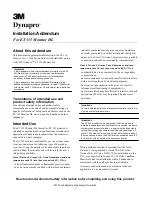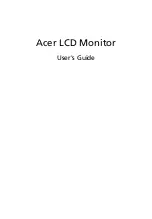
3.2 How does
Kerio Network Monitor
work?
11
data (the high resolution data — one file per day, the low resolution data — one file per
28 days).
Then there are created the following subfolders:
•
browse
— the information about the captured objects of the monitored services
(URLs of web pages, E-mail addresses, FTP relations, etc.)
•
captured
— captured objects (e.g. captured WWW pages, E-mail messages, etc.)
•
logs
— files with the logs (see chapter
7.7
)
•
debug
— the data stored for detail monitoring of particular service (see chapter
6.2
)
The folder structure for storing the data is rather flexible because it enables e.g.
•
merging of the data with other data (if it deals with two mutually exclusive time
periods)
•
deleting the logs for a particular computer (IP address)
•
deleting the data of a particular service (e.g. WWW).
Before performing operations of this type, it is necessary to stop
Kerio Network Monitor
Daemon
(see chapter
5.2
).
Data Storage Folder Modification
In case you need to change the folder for storing the measured and captured data and
the log files (so that they are for example stored to the different disk), it is possible to
carry it out by modifying appropriate parameter in the configuration file.
First of all it is necessary to stop the
Network Monitor Daemon
service (see chapter
5.2
).
Then open in any editor (e.g.
Notepad
) the file
NetMon2.cfg
(the
Configuration File
section). The data folder is written in the
main_dir
parameter. For technical reasons
the backslashes must be doubled in the path name — the path to the chosen data folder
can look like this:
main_dir = "d:\\netmon_data"
The change of the data folder is best to perform immediately after the
Kerio Network
Monitor
program installation, when there are not yet any measured real data. If you
are changing the folder after some time of using the program, it is necessary to copy
(respectively move) to the new location the folders with the acquired data and the logs,
i.e.
browse
,
captured
,
debug
,
high
,
logs
,
low
a
www
.
Summary of Contents for Network Monitor
Page 1: ...User s Guide Kerio Technologies...
Page 8: ...Chapter 2 Quick Checklist 8...
Page 14: ...Chapter 3 Technical Information 14...
Page 18: ...Chapter 4 Installation 18...
Page 40: ...Chapter 6 Configuration 40...
Page 66: ...Chapter 8 Web Interface 66...
Page 70: ......












































